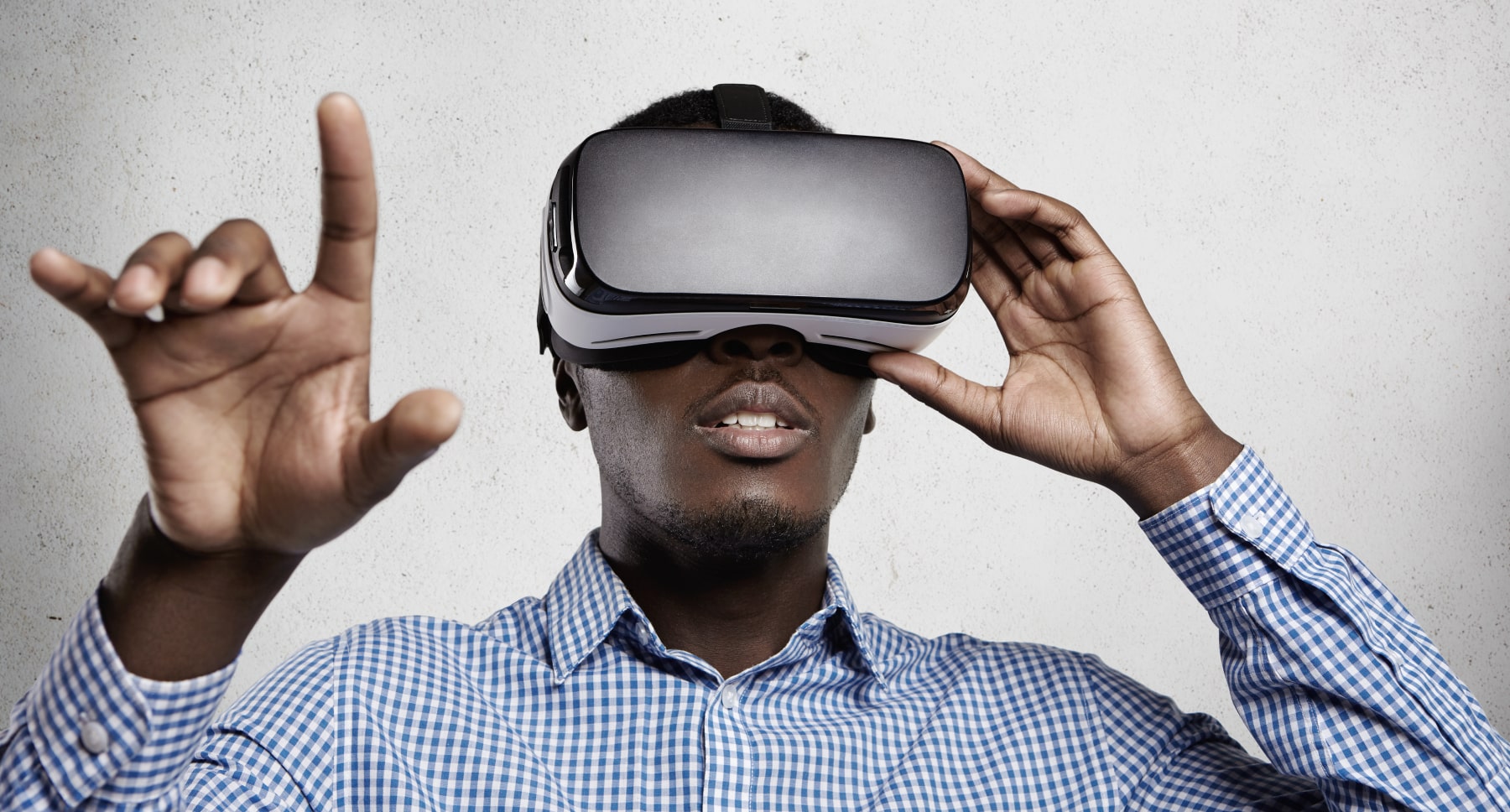- Disruptive Technology Initiative
- / DTI Tech Tips
- / Virtual Reality: Ready for Prime Time?

Virtual Reality: Ready for Prime Time?
Author: Leah Ellenberg
Disclosures: None
Synopsis: Virtual Reality (VR) is an immersive technology that uses computer-generated, 3D-environments, typically through a head-mounted display, that allows human–computer interactions to be more natural and intuitive by immersing individuals in realistic scenes, to obtain greater ecological validity by making the test situation more similar to real life.
Overall Description: VR has been investigated for use in neuropsychology since the 1990’s, and several instruments were operational by the early 2000’s. However, the field was slowed by the large expense involved in setting up VR systems. In the past several years, the expense has been enormously reduced by the popularity of VR for gaming, which has led to several systems now in popular use, with purchase prices below $500.
In addition to assessment, VR systems have been used successfully for treatment of psychological disorders such as phobias and PTSD. There are also indications that VR is useful for neuropsychological treatment, including rehabilitation for movement disorders.
Some applications of VR for assessment and treatment are ready for clinical use, including assessment for AD/HD using a virtual classroom, treatment for PTSD in veterans via VR exposure therapy, and motor and balance training. Other systems are available for research, including the Virtual Reality Everyday Assessment Lab (Kourtesis et al).
Case Study Example: LS, 10 years old, referred for possible AD/HD due to inconsistent school performance and mild impulsivity. Comparison of test results from the Conners Continuous Performance Test, 3rd Edition and Nesplora Aula Virtual Classroom is presented here and here. The CPT-3 takes about 14 minutes and yields 3 results for error type and 5 reaction time statistics. The Aula Virtual Classroom, in about 16 minutes, yields separate RT and error analysis results for visual and auditory stimuli, distraction and distraction free conditions and motor activity (head movements). Although much more information is available, the normative group is not well defined and no technical manual is available.
Limitations: So far, normative data for VR techniques is limited. Much work needs to be done to expand the normative base before widespread clinical use is warranted for most applications. Use of within-person designs may be more fruitful at this stage. In addition, some techniques can cause adverse VR induced symptoms (cybersickness). Kourtesis and MacPherson are working to assure that their memory assessment VR tool (VR-EAL) meets AACN/NAN guidelines for computerized neuropsychological assessment. Additional guidelines have recently been proposed specific to VR (VR-Check, Vasser & Aru, 2020).
Justice, Diversity and Inclusion Issues: Virtual reality platforms have come down in price, but still cost around $500, which limits access. Also, normative studies remain poor for most applications, and studies using normative data for minority groups are absent to date.
Links:
VR Platforms:
Meta Quest: https://www.meta.com/quest/products/quest-2/
HTC Vive: https://www.vive.com/us/
Sony Playstation VR: https://www.playstation.com/en-us/ps-vr2/
Pico Neo 4: https://www.picoxr.com/global/products/pico4
Instruments for clinical use:
AD/HD Assessment: Cognitive Leap VRAT: https://www.cognitiveleap.com/vrat
Nesplora Aula, Aquarium: https://nesplora.com/productos/
Others: Virtuleap: https://virtuleap.com/
References:
Imogen H. Bell, Jennifer Nicholas, Mario Alvarez-Jimenez, Andrew Thompson, Lucia Valmaggia. Virtual reality as a clinical tool in mental health research and practice. Dialogues Clin Neurosci. 2020 Jun; 22(2): 169–177.
JoAnn Difede, Barbara O. Rothbaum, Albert A. Rizzo, Katarzyna Wyka, Lisa Spielman, Christopher Reist, Michael J. Roy, Tanja Jovanovic, Seth D. Norrholm, Judith Cukor, Megan Olden, Charles E. Glatt and Francis S. Lee. Enhancing exposure therapy for posttraumatic stress disorder (PTSD): a randomized clinical trial of virtual reality and imaginal exposure with a cognitive enhancer. Translational Psychiatry, 2022. 12:299.
Panagioltis Kourtesis & Sarah E. MacPherson. How immersive virtual reality methods may meet the criteria of the National Academy of Neuropsychology and American Academy of Clinical Neuropsychology: A software review of the Virtual Reality Everyday Assessment Lab (VR-EAL). Computers in Human Behavior Reports, Volume 4, August–December 2021, 100151
Albert Rizzo, Sebastian Koenig, and Belinda Lange. Clinical Virtual Reality: The State of the Science. In APA Handbook of Neuropsychology: Volume 2. Neuroscience and Neuromethods, G. G. Brown, B. Crosson, K. Y. Haaland, and T. Z. King (Editors), 2023, American Psychological Association.
M. Vasser, J. Aru. Guidelines for immersive virtual reality in psychological research. Current Opinion in Psychology, 36 (2020), pp. 71-76.
Comments/Experiences to Share?
Dear AACN members, please log in to share your comments or questions here.
